Continuing the ongoing series of interviews with creative artists working on various aspects of movie and TV productions, it is my pleasure to welcome Jesika Farkas. In this interview we talk about the beginning of her career in the field of architecture and interior design, the transition into the world of episodic television and feature films, building spaces for actors and collaborating with directors and cinematographers, and the challenges of working on small indie productions. In the middle of it all, Jesika tells the story of “Dixieland” – a movie that follows two characters in the underbelly of Mississippi.

Kirill: Please tell us about yourself and how you got into the industry.
Jesika: My background is in architecture and interior design, but I’ve always loved film. I was working for an architecture firm that sort of imploded, and I had a bit of time on my hands. My brother was in industry doing storyboarding, and he was approached to design a short. He wasn’t able to do it at the time, and he put them in touch with me. That was in 2010.
I always loved the concept of visual storytelling, and I accepted the gig. It was “Mother’s House”, the first production I designed. It was a nine-day shoot with some really lovely people, Ingrid Price and Davis Hall who wrote, produced and directed it. And from there it catapulted into the field, and since then I’ve been doing feature films, TV and shorts.
Kirill: Was there anything surprising when you joined this industry that was new for you?
Jesika: This actually happens quite a bit. I live in New York and I split my time between upstate New York and New York City. There’s a firm called “Roman and Williams”, and that couple actually started off in the film industry. They did a bunch of films with Ben Stiller, and wound up designing his house. From there they made a switch to the other direction and now they have a very established and reputable architecture / interior design firm.
And sometimes it happens in the reverse direction. It’s the visual medium that you’re playing with. There are spaces, and you’re conceiving of them. It can be for actors to come through, and they’re constructed in a way that lasts for a temporary moment. Or it can be for more permanent enjoyment. But they have a similar goal that you’re going after.
It was a very easy transition for me to take up film and create the environments that help to tell the story. In architecture you’re designing things that last a lot longer, but they might not have as much playfulness or creativity going into them. I actually still do a little bit of that as well, straddling the two worlds of reality and film.
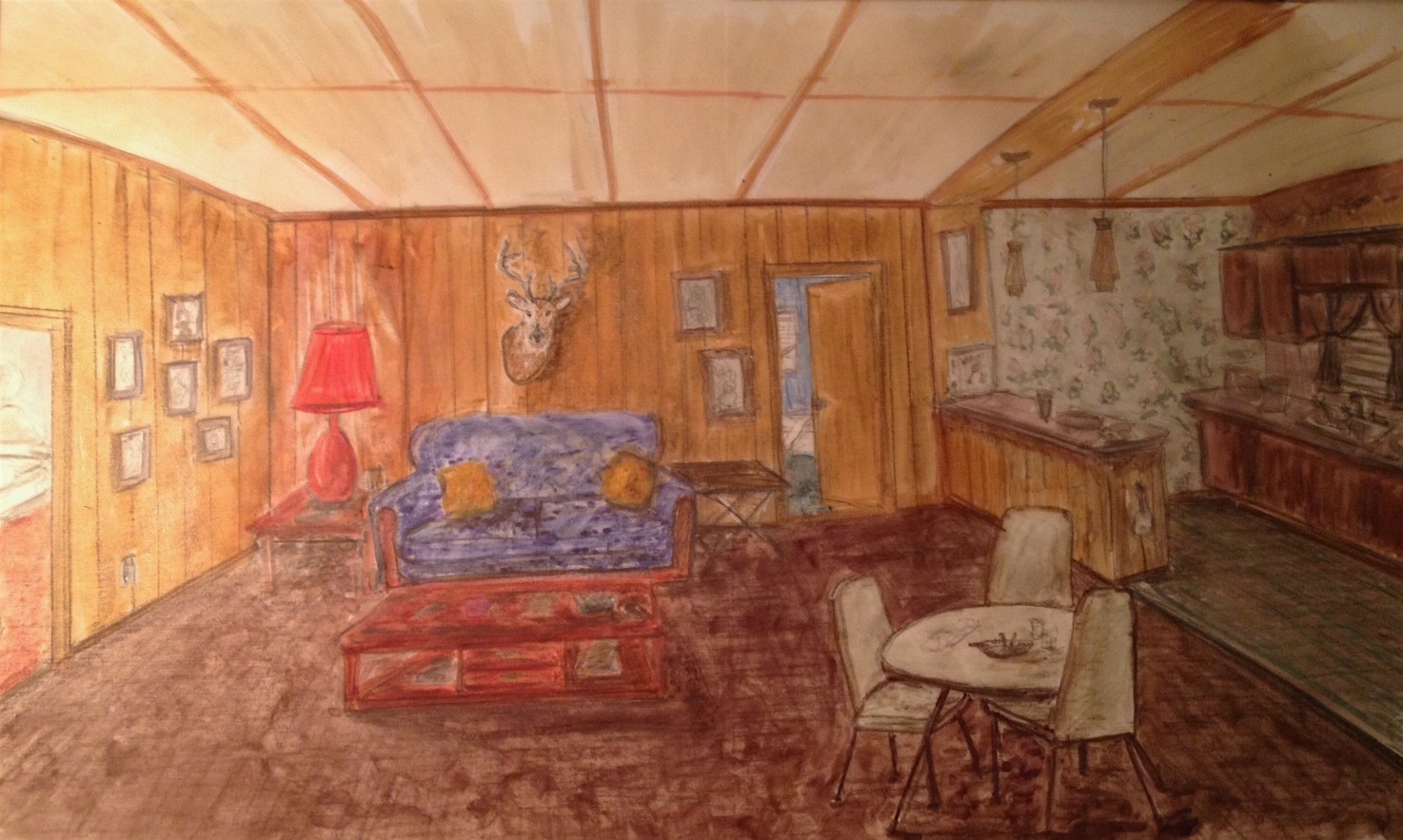
Concept artwork for “Dixieland”, courtesy of Jesika Farkas.
Kirill: If you asked me twenty years ago how movies are made, I’d tell you that somebody puts a camera on the shoulder, points it to the actors that happen to be in some existing space, somebody shouts “Action!” and that’s it. But that’s not as simple. Everything needs to be designed, to create environments that tell the story visually.
Jesika: Absolutely. It’s very much a collaboration between the production designer, the director and the director of photography to conceive of a space. It always starts with a palette and feeling of the film, and being able to visually convey what is needed for the story. You work with that. But it does seem like it could be quite easy.
But ultimately if you really want to convey something fluid and you want to support the story, it needs to be designed. And you don’t even notice that. Sometimes it can be very much in your face, but it can also be very subtle. There’s needed intervention in the design process, for sure.
Kirill: What is your experience with episodic television so far?
Jesika: A lot of it is done on a soundstage. You wind up building the primary set, something that you come back to time and again. And you fill in with locations to give everyone a break and be able to diversify the visual element of the whole series. But the anchor is the staged set, and it can be quite different from independent films, where staged sets are an afterthought. There you’re really out in the field shooting and making locations work.
For episodic television it’s often a very planned larger set that you curate and build, and it’s a basecamp that you come back to time and again. That becomes the anchor of a series.

Kirill: Is that a production consideration that you have however many episodes in the season, and you can’t close down a particular location for an extended period of time?
Jesika: That’s right. Your set is there on the sound stage, and it might be sitting there with nothing happening when you’re out in the field on the various locations.
Kirill: Do you have a preference between working on location and on stage sets?
Jesika: If you go back to earlier film days, everything was on a stage and everything was controlled. You think of old Hollywood, you think about giant cavernous place where you could create SPRAWLING sets and everything was at your disposal. But of course it’s a very costly thing. This is where finding locations helps.
You wind up working with those spaces, and transforming them sometimes or just leaving them as is and going with the feeling. That depends on being able to find a location that suits your need. I think there’s an advantage to shooting on a stage for sure. You can create everything exactly as you want it to be. And there’s also an advantage to being on location and finding things that are already existing and beautiful. You have the ability to invite natural daylight into spaces and just augment that. You see the passage of time in those spaces, and find things that are sometimes difficult to recreate.
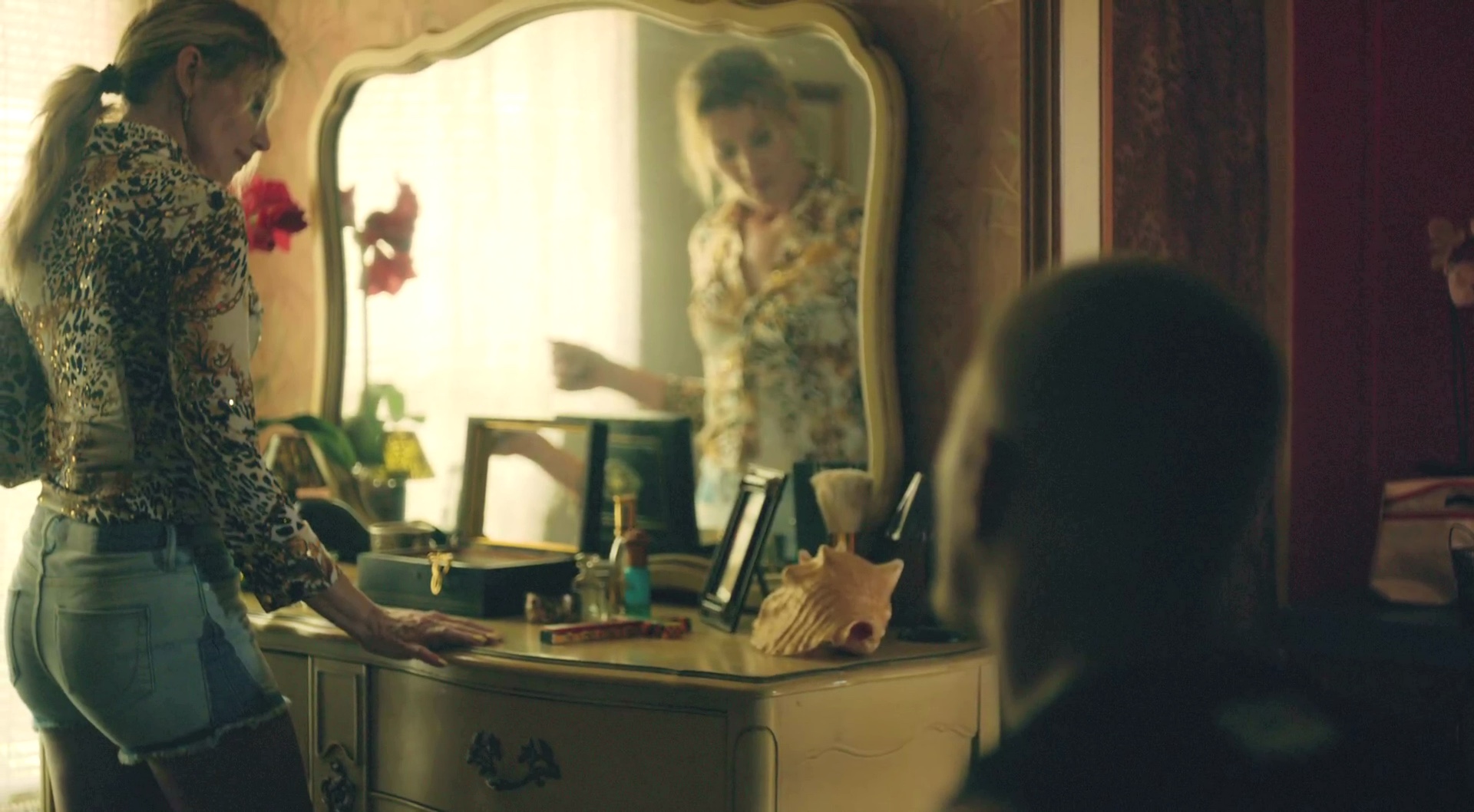
Continue reading »
See the recent follow-up on the changes to the font family name on Catalina and changes needed at the JRE level to support proper kerning.
Starting from OS X El Capitan (10.11), there’s a new default system font in town – San Francisco. And it came with a very big underlying change, as detailed by Craig Hockenberry:
Apple has started abstracting the idea of a system font: it doesn’t have a publicly exposed name. They’ve also stated that any private names are subject to change. These private names all begin with a period: the Ultralight face for San Francisco is named “.SFNSDisplay-Ultralight”. To determine this name, you need to dig around in the font instances returned by NSFont or UIFont; it’s not easy by design.
The motivation for this abstraction is so the operating system can make better choices on which face to use at a given weight. Apple is also working on font features, such as selectable “6” and “9” glyphs or non-monospaced numbers. It’s my guess that they’d like to bring these features to the web, as well.
Even though the underlying .otf files are still in /System/Library/Fonts, San Francisco is no longer exposed via the regular APIs that web and desktop developers have grown used to. Specifically for Swing developers (of which there may not be many, so at some point it will kind of take care of itself), passing “San Francisco” to the Font constructor ends up using the previous default – Lucida Grande.
JavaFX is already doing the right thing, using San Francisco as the default UI font on El Capitan and Sierra. Swing’s legacy is to have each look-and-feel decide which font to use, and I was expecting the “System” look-and-feel which maps to Aqua to be using the right font family on the latest OS releases. That is not the case as I’m writing this entry, and Swing apps on both El Capitan and Sierra are still using Lucida Grande on both 8u112 and 9-ea.
Last week Phil Race pointed me to this issue that tracked syncing up the internal implementation details of glyph mapping between JavaFX and AWT. That issue has been fixed in early access builds of JDK 9, and is slated to be available in JDK 8 u152 scheduled for October 2017. At the present moment there is no public API to get either a name or a font instance itself that will be mapped to Lucida Grande on 10.10 and earlier, and to San Francisco on 10.11 and 10.12. The only available solution is quite brittle as it depends on the internal naming conventions exposed by the underlying OS:
- .Helvetica Neue DeskInterface on El Capitan (10.11)
- .SF NS Text on Sierra (10.12)
Note that you need a leading dot in both cases, and that this only works on early access builds of JDK 9 at the moment:
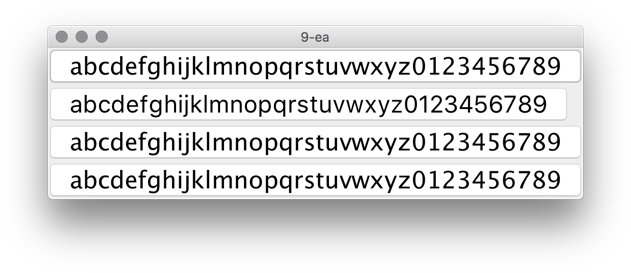
In this screenshot the second button is using new Font(“.SF NS Text”, Font.PLAIN, 24) while the rest are rendered with Lucida Grande. The most noticeable differences are in the curvy strokes of “e”, “g”, “5” and “9”, as well as the straight leg of “a”.
Ideally, there’d be an officially supported way to use the right font on OS X / macOS, either in a form on some kind of a static Font API or a synthetic font family that maps to the underlying system font on all supported platforms. Phil has filed a bug to track the progress on that front.
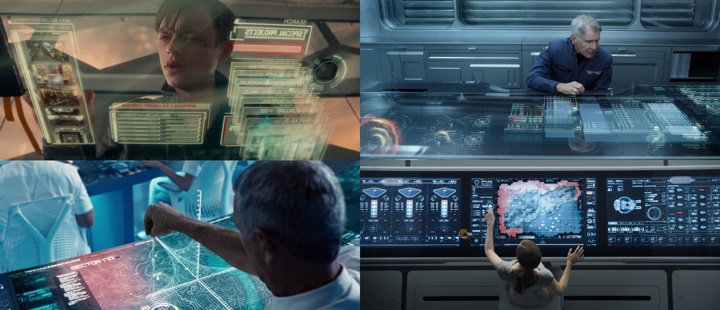
Sometimes, as my laptop’s fans kick in during a particularly long build, I find myself gazing away from the screen, letting my eyes roam around my desk, losing their focus and slipping into daydreaming.
I find myself thinking about how, just twenty short years ago, one of the obviously expected cables sneaking their way into one of the oversized ports was the bulky Ethernet monstrosity. I think about how seamless and pervasive WiFi has become in my daily life, and how unremarkably smooth that transition has been. Unlike, say, a variety of clunkily unreliable wireless keyboards and mice that I’ve tried over the years. Every laptop that I’ve had in the last decade, at work and at home, always had a wonderfully ungainly cable snaking around, connected to my trusty companion, a two-button mouse. As unremarkable and as ever-present as its eponymous rodent friend.
Despite the soothingly persistent promises of all-day battery life, if I don’t plug my laptop into a nearby power outlet, it can barely plow through playing a two hour 1080p movie. Or doing about an hour of edit-compile-deploy-debug cycles. Or pretty much anything that is not browsing Craigslist. And sometimes, you have to use the right power adapter because some of them do not give you enough juice to even keep up with those long build breaks that happen every now and then. I don’t know if I should laugh or cry. Or maybe both at the same time. So there’s another, slightly less ungainly cable, snaking around. They say color white elevates any hardware design. So I guess it has to be not as ungainly.
I once lost about half a day trying to configure a wireless printer to actually behave as it so boldly promised on its box. To be wireless. It’s there now, in my basement. Snaking around yet another ungainly cable into my laptop. Actually strike that. There are not even enough ports in my laptop for that. So now there’s a box that sits right next to my laptop, with Tron-esque blue LED lights for each plugged cable that indicate that yes, everything that is connected is indeed that. Connected.
If Bluetooth were running in 2016 presidential elections in US, it might prove a very formidable post-truth opponent to our president elect. This time is for real, the working group promises me every time they release a new major version of their spec. This time is for real, whispers the little ghost that calls itself the desktop variant of Linux. Wait, is this for real, whispers Leonardo Di Caprio hearing his name at 2016 Oscars. So there goes another cable sneaking into my laptop, pumping the soothing melodies of Americana folk into my ears.

I watch yet another futuristic video from yet another company that decided to spend some money on exploring the wild. Every surface is screen. Every surface is input. People are congregating around tables, playing some kind of air hockey with rectangles of data. It looks like they are having fun. At work. How rude.
And I find myself daydreaming. That I come to work and I don’t need to wave my badge to tell the system that it’s me. Because when I come back home, my kids know that it’s me. Without me typing in my 20-character long password with at least three special characters in the middle and then telling them some random piece of secret information. So random that you would probably be able to find it in five minutes or so if you knew where to look on one of the social networks.
I daydream that anything I place on my desk gets charged without me having to put it in just the right spot and then do mental gymnastics on what’s the next piece of hardware that gets to be charged to make it through the day. I daydream that I don’t have a single cable on my desk. Around my desk. Or under my desk. I daydream that if the mythical they were able to do that to the network and make it almost as reliable as the slowly dying landline phone network, they can surely do that to the rest of the things that make a computer what it is today. This time is for real, whisper the shadow apparitions from the just-concluded CES.
I daydream of watching a sci-fi movie with an iPod, a phone and an Internet communicator that doesn’t show any signal strength indicator or any battery indicator. Because those are always on and at full value. Because it gets boring after a while to see that your signal is at five bars and your battery is at 100%. Wouldn’t that be something? When something becomes so ubiquitous that you tell these stories to your kids and they roll their eyes and say, sure pops, you stood in a line for two hours just to buy ten rolls of toilet paper. But wait, I tell them, that was actually a thing. Sometimes you joined a line and waited without knowing what was on the other side. Because that’s what you do. Sure pops, they say.
And then the silence settles in. The fans are not spinning anymore. The build is done. I should probably get back to work. I gaze at the cables. They have been my people for a long time now. I have boxes of them in my basement office. I never throw away a cable. You never know when you might need one. You never know.
Continuing the ongoing series of interviews with creative artists working on various aspects of movie and TV productions, it is my pleasure to welcome Dan Laustsen. In this interview we talk about Dan’s work on one of the most visually striking films of 2016, “Crimson Peak”, as well as about the transition from film to digital, different ways to convey suspense and horror, minimizing disruptions on set for the actors, and the magic of making films.
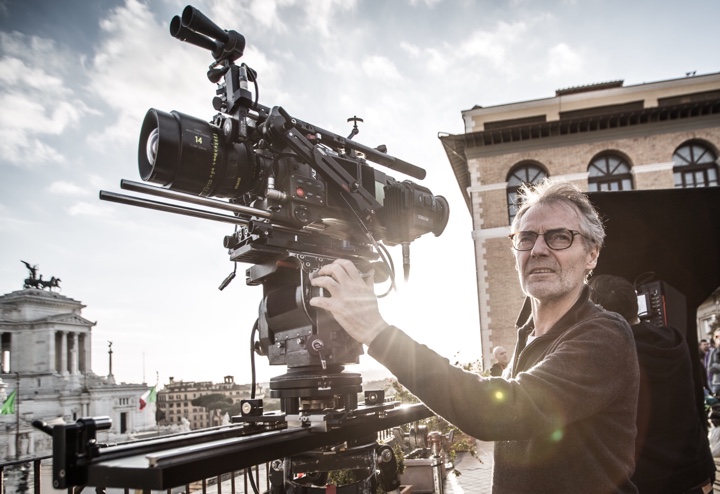
Dan Laustsen on the set of “John Wick: Chapter 2”. Photography by Niko Tavernise.
Kirill: Please tell us about yourself and your path so far.
Dan: I was born and educated in Denmark. I studied set photography, and when I was 21, I was bored with it. At that time I went to the Danish Film School to study cinematography. I’ve spent three years there, and after graduating started working on my first feature film straight away at the age of 25. Nobody in my family has anything to do with filmmaking, but I am very happy about being here.
Kirill: Has much changed for you in your field over the years?
Dan: Telling a story is the most important thing that we do. That’s the basis of everything that you do. You work with the script and you paint with light.
In the old days we shot everything on film, and things are getting faster and faster now. The equipment is getting better. At the beginning of it I was against digital. I didn’t like the look, but that has changed after a while. We did “Crimson Peak” on digital, and I was very pleased with the look. Alexa is doing a fantastic job with its cameras.
It’s easier to see what you’re doing. In the old days you had the magic of capturing the image on camera, and that’s disappearing. It’s a shame because you were not totally sure how it was going to be, and you had to wait for the lab to process dailies. All that disappeared, but I’m not afraid of that. It works fantastic and helps with what we do, which is to tell a story in the way we want to.
The lenses are getting better, and I’m very much for that high quality that it brings to cinematographers. I don’t go for old-fashioned lenses. I’m using the high-end equipment as much as I can.
Kirill: While that magic is gone, on the other hand everybody can immediately see what the camera sees. That must be creating a tighter feedback loop for fixing whatever issues crop up on the set.
Dan: For sure, and that’s good. Everybody has opinions, and I think the most important part is for the director and the cinematographer to work together. Everybody on the crew works together, and it’s much easier now. We have high-quality video monitors on the set, and everybody can see small mistakes and fix them right away. But the magic of movie-making has disappeared. It is what it is, and I think it’s helping everybody.
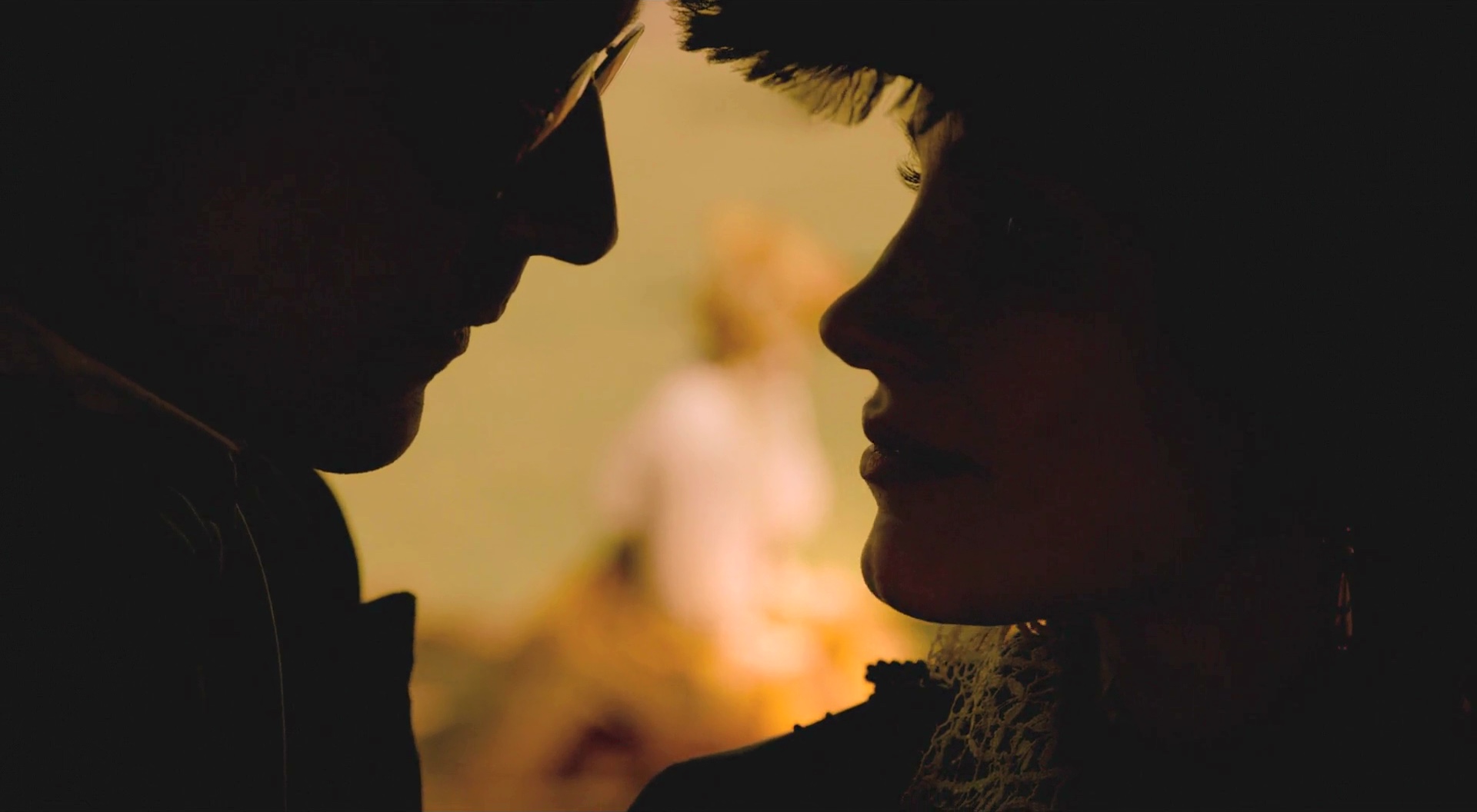
Kirill: Do you think it’s becoming easier for people to get into your field, as the equipment for shooting and editing is becoming cheaper and more widely accessible?
Dan: I’m sure it is. You can shoot with an iPhone or a small camera. Everything is about the story, and it’s much easier to tell those stories now for younger directors. You don’t need to spend a lot of money on labs, for example. You don’t have to be afraid of anything any more, and that gives a big push to everybody.
Kirill: What makes people still go with film as a medium?
Dan: You’ll have to ask somebody who is still shooting on film. People are shooting on 70mm, and the quality is amazing. For me personally, digital is doing a fantastic job. You can get a bit nostalgic about it. I’ve shot feature films on 45mm, and I was very much against digital at the beginning. But what we’re getting now from digital is fantastic in my opinion.
You still have to light the scene to tell the story in the right way. What I like about making movies these days is that there are no rules. You can do whatever you would like to. In the old days you had so many rules about what you could and could not do, about lines that you could not cross. All those rules have disappeared and that’s so good. You can tell a story in exactly the way you want.

Continue reading »
![]()
![]()
![]()
![]()